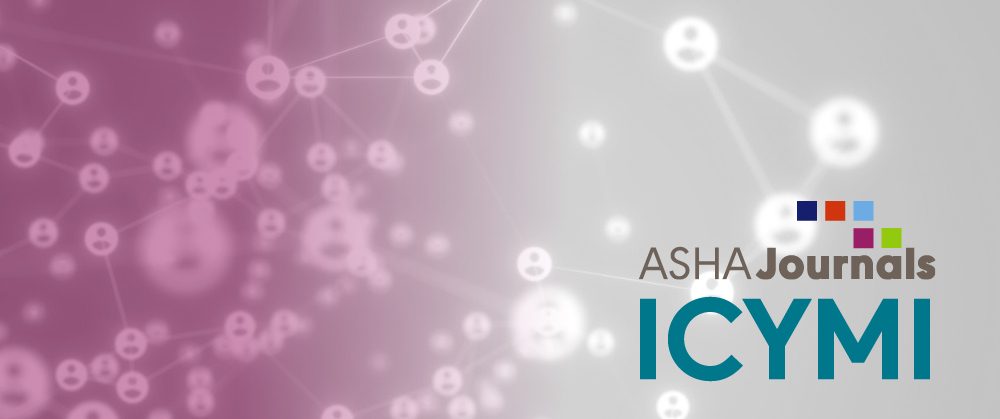This past year was, if nothing else, eventful. However, here in the ASHA Journals Program, our goal remained the same—to ensure that our readers had access to the latest research in communication sciences and disorders.
Despite a pandemic and an unprecedented disruption to our work and home schedules, the authors, reviewers, editors, and editors-in-chief of the ASHA journals were still able to publish more than 850 articles in 2020. However, with publication this frequent, and during a year so hectic, we’re sure our readers may have missed an article or two.
Below, we’ve compiled a list of our top 10 articles from 2020. The articles we’re highlighting come from across the ASHA journals and touch on a variety of topics of interest.
Telepractice for Adult Speech-Language Pathology Services: A Systematic Review: This article from Perspectives was the top article of the year in the ASHA Journals. This literature review looks at more than 30 articles on adult telepractice services from 2010 to 2019, with the authors determining that telepractice is an appropriate service delivery model in speech-language pathology for adults.
How We Fail Children With Developmental Language Disorder: Since it was first published in August, this LSHSS article quickly became our most talked about article of the year according to Altmetric, with more than 340 mentions on Twitter alone. In this article, author Karla K. McGregor showed that children with developmental language disorder (DLD) are underserved and that the disorder is under-researched; she explored the reasons behind this and proposed solutions.
Acquired Central Auditory Processing Disorder in Service Members and Veterans: This JSLHR article made such a big impact upon its release that it soon became the focal point of a special collection: Audiologic and Aural Rehabilitation in Veterans and Service Members. This article focused specifically on central auditory processing deficits associated with exposure to known military risk factors, pointing out additional areas where funding and research are needed in order for audiologists to serve this population.
Effects of Expiratory Muscle Strength Training on Videofluoroscopic Measures of Swallowing: A Systematic Review: This review in AJSLP looks at expiratory muscle strength training—commonly used in dysphagia rehabilitation—to determine its relationship to videofluoroscopic swallowing measures. The author also provided a plain language summary of this article on Kudos.
The Impact of Interactive Shared Book Reading on Children’s Language Skills: A Randomized Controlled Trial: Interactive shared book reading can support a wide range of early language skills and, in this study published in JSLHR, the authors examined whether or not interventions to support shared book reading for caregivers would increase its utilization.
Speech Perception in Classroom Acoustics by Children With Hearing Loss and Wearing Hearing Aids: This study published in AJA measured reductions in noise and reverberation in a classroom that can allow children with hearing aids to better hear the speech of others. The author also provided a plain language summary of this article on Kudos.
Early Speech and Language Development in Children With Nonsyndromic Cleft Lip and/or Palate: A Meta-Analysis: Looking at research, the authors of this JSLHR article found that young children with nonsyndromic cleft lip and/or palate experience delays relative to their peers across multiple speech and language constructs that appear to decrease with age.
Developmental Language Disorder: Applications for Advocacy, Research, and Clinical Service: In this Perspectives article, the authors explain the appropriate application of the term developmental language disorder in the context of a similar term—specific language impairment—and propose the linking of advocacy efforts internationally.
Using Computer Programs for Language Sample Analysis: Language sample analysis is recommended for assessing children’s expressive language, but many speech-language pathologists find it hard to complete. This LSHSS article looks at using computer programs to conduct language sample analysis in order to make this process more feasible.
Evaluation of Parent- and Speech-Language Pathologist–Delivered Multiple Oppositions Intervention for Children With Phonological Impairment: A Multiple-Baseline Design Study: When intervention works best more than once a week, seeking parental aid can be helpful. This AJSLP article looks at training parents to help deliver phonological interventions at home along with the aid of a speech-language pathologist.
Whether you’re revisiting these articles or reading them for the first time, we hope you spot something that catches your interest! And be sure to check ASHAWire to stay up to date on the latest articles in 2021 and beyond.









